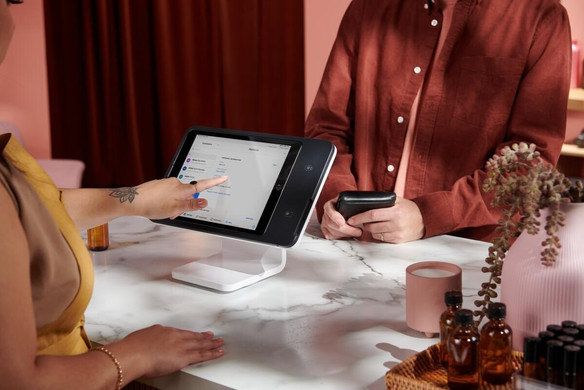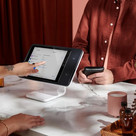Table of contents
The retail industry is reshaping the shopping experience in 2024, redefining not only how we shop and sell but also where we shop and what we buy. The cutting-edge retail trends below are guiding each step of the way.
The boutique on your town’s main drag, the shoppable post that appears in your Instagram feed, and the marketing email sending you to an online store may all come from the same retailer. And that retailer may be fundamentally different than they were last year.
To help retailers identify and lean into strategies that satisfy consumers’ evolving preferences, Square teamed up with Wakefield Research and surveyed 2,000 retail owners and 4,000 consumers in the U.S., Canada, the UK, and Australia. What we found was eye-opening — the who, what, where, and why behind our shopping experience is going through a metamorphosis. Savvy retailers are beating out competition by harnessing technology to streamline operations and improve not only employee satisfaction but also the customer experience. The lines between verticals are blurring, and a seamless omnichannel experience is more critical than ever before.
We analyzed the survey results, insights from the Square retail team, and interviews with creative retailers leading the charge to identify the top retail trends for businesses to explore this year. All data cited below comes from the survey results. For a more in-depth look at these 2024 retail industry trends, download the full 2024 Future of Retail report.
Future of Retail Report: 2024 Edition

Automation is upgrading the employee and customer experience.
Automation can get a bad reputation for being impersonal, but in reality, it can improve both the employee and customer experience. Automation frees up time spent on manual tasks, so your employees can have a bigger impact on the business. It’s no surprise, then, that 45% of retailers surveyed have seen greater employee retention and increased profits as a result of their automation investments. Looking to leave your competitors in the dust? Greater innovation (42%) is another side effect for retailers who use automation technology, which is greater among Australian retailers (45%) than those in other countries polled.
Retailers are finding that automation cannot only reduce the amount of time your staff spends on manual and repetitive tasks, but if used carefully, it can also create a standout customer experience by servicing customers faster and learning from employees about the more personal aspects of customer service. And the proof is in the pudding — retailers surveyed said one of the greatest benefits of investing in automation is an improved customer experience (47%).
Customers actually appreciate being able to do certain tasks themselves when it saves time. Our research shows that 67% of retail shoppers prefer automation over talking to live staff when it comes to tasks like tracking inventory or ordering out-of-stock products. Customers want automation when it makes their shopping experiences more efficient, but they still value human interaction to make their shopping experience above and beyond.
Consider automating repetitive manual tasks, but don’t forget that customers rely on staff to make the shopping experience memorable. Automating tasks such as inventory management, for instance, lets customers know what’s in stock without having to ask a member of your staff. This saves them the hassle of asking the question, and it also saves your staff time from having to manually check for products. To support this, retailers may consider investing in automated software or upgrading what they currently use to meet the changing needs of customers. Square makes inventory management easy with tools that let you manage what you have in stock across your online store and brick-and-mortar locations and alert you when your items are low.
Retailers are enhancing the customer experience, with a focus on more choice.
To keep up with ever-changing customer preferences, retailers plan to focus on adopting faster and easier communication channels, offering more in-store events and shopping experiences, doubling down on loyalty programs, and accepting emerging payment methods. When it comes to emerging payments, buy-now, pay-later (BNPL) payment options and QR code payments are at the top of that list.
Retailers who report accepting a BNPL payment option have increased 10% since 2022, with an average of 43% of retailers now accepting these payments. Retailers are finding they can attract the millennial and Gen Z shoppers while increasing orders by providing an easy way for customers to pay in installments with Afterpay.
It’s essential for retailers to offer more choices at checkout, especially as they look to capture next-gen consumers, who are increasingly turning to BNPL solutions to enable them to budget and spread the cost of their purchases. Since adding Afterpay to the Square ecosystem of commerce tools, sellers can easily turn on BNPL capabilities to attract younger shoppers and drive incremental revenue to their businesses, all while managing these omnichannel orders on one platform.”
Alex Fisher → head of revenue, Afterpay and Cash App
If you’re interested in trying BNPL options, see how Square and Afterpay can help get you started.
Customers actually want to engage with their favorite brands.
Communicating with customers and keeping them engaged is often a delicate balance for any business. Knowing when to send the email or when to promote the sale via text — or both — typically depends on your audience, but understanding where to start and the channels to prioritize makes all the difference.
Luckily, customers want to hear from the businesses they frequent. Eighty-two percent of global consumers surveyed agree that receiving communications from local businesses makes them feel more connected to the business. Only 18% of consumers reported that communications don’t make them feel more connected, so don’t be afraid to reach out. By using Square Email Marketing and Square Text Message Marketing retailers can build stronger customer relationships and drive repeat business.
When expanding your customer base, also keep in mind that 67% of total consumers say recommendations from family or friends are important when considering visiting a local retailer, and 54% say a website or social media is important in their consideration. A retailer’s social media is even more important for Gen Z and millennials, while a storefront is more important to Gen X and baby boomers. Developing a strong online and offline presence is critical to maximizing your reach with customers of all ages.
Blurring the lines between verticals makes for resilient businesses.
Don’t put your business in a box. Retailers are taking a multihyphenate approach in order to keep up with industry trends and continue to grow their customer base. Multihyphenate businesses diversify their revenue streams by adding complimentary noncore offerings, subscriptions, or other services to their store.
Last year I started doing permanent jewelry in my brick and mortar. The style of permanent jewelry fits really well with the style of jewelry I’ve been making for the last 16 years. A lot of times, when the brick and mortar wasn’t busy with street traffic, I would work on wholesale orders. But then once I started doing the permanent jewelry, it has not slowed down since January. I’ve let go of my wholesale business because permanent jewelry has made the retail part so busy for us.”
Marrah Florita → owner of To Nashville with Love, United States
Consumers are also becoming accustomed to retailers expanding their offerings. Eighty percent of consumers surveyed are somewhat interested in trying a new type of offering at a business known for something else, while 40% are very interested. If you’re looking to attract younger, influential shoppers, Gen Z is the most interested in trying a new type of offering compared to older generations, with a full 93% being somewhat interested and 57% being extremely interested.
In addition to multiplying revenue streams, retailers can reach a wider audience with a multihyphenate approach. Square for Retail makes going between two or more offerings and services simpler than it sounds.
Retailers are not only expanding what they sell, but where.
Selling and managing products in person, online, and across channels needs to be seamless for consumers and retailers alike. In addition to an online store and brick-and-mortar locations, retailers are capturing sales and winning the loyalty of customers through social media channels. And it’s working. Fifty-two percent of consumers surveyed have bought products directly from social media in the past month. And of those, about one-third (29%) have bought between one and four products.
In order to appeal to all generations of shoppers and ensure customers get what they want, where they want it, a smooth omnichannel experience is vital. Baby boomers and Gen X prefer shopping in-store, whereas Gen Z and millennial shoppers prefer to shop online. While online shopping is here to stay, in-store shopping is making a comeback. Retailers’ online income has slightly declined to an average of 34% of their overall revenue as shoppers feel more comfortable returning to stores.
I think it’s so important to reward loyal customers. I want Cakeworthy customers who shop with us regularly to know that they are getting the best bang for their buck. And they love it — our loyalty customer percentage is higher than our non-loyalty percentage.”
Brandon Shedden → owner of Cakeworthy, Canada
Ready to drive shoppers in-store? Regardless of the generation, shoppers are most likely to visit stores in person if loyalty program perks are offered to in-store shoppers only.
Retailers are tapping into the qualities that make them unique, reworking them, and using them to their advantage as consumer needs evolve. The future of retail in 2024 lies in the overall experience.
To incorporate these retail industry trends into your business, consider automating your operations and then trying out new ways of selling. When you find what fits, you can give customers exactly what they need while giving you the room to try new things. And when you get to that space where you can pull the levers that work for your store, your future is wide open.
FAQ on the top retail trends
What are the biggest challenges facing retailers in 2024?
According to our 2024 Future of Retail data, retailers agree their revenue needs solutions, but they’re divided on their approach: 51% plan to focus on enhancing the in-store experience in the next 12 months, while the other 49% are putting greater focus on adding more online options. It remains clear that a seamless omnichannel approach is critical for capturing all generations of shoppers and increasing retailers’ profitability.
What are the latest trends in retail marketing?
When it comes to retail marketing, retailers are searching for new ways to improve, especially as it relates to reaching Gen Z with their marketing efforts. Nearly a quarter of retailers already use a different approach for Gen Zers (23%), up seven points from last year, as another 34% plan to implement a different approach, also up seven points from last year. Doing so effectively may be a challenge, though, as 99% face challenges with their current technology that make it difficult to take a more targeted approach in their marketing and communications efforts.
When asked what improvements were needed to compete in today’s retail marketplace, improving customer relationships through faster and easier communication channels was the top response, with 42% saying it’s needed. Leveraging the right technology solution is key to remaining competitive.
Want more insights on how retail store owners are innovating in 2024? Get a deeper look into these popular trends in our 2024 edition of the Future of Retail report.
![]()










